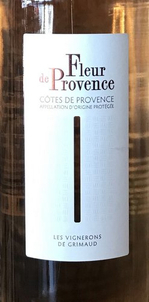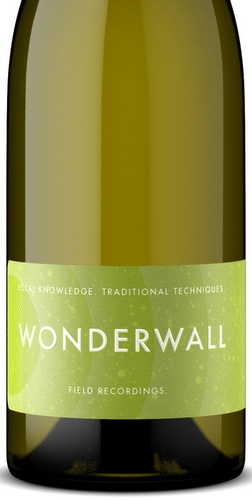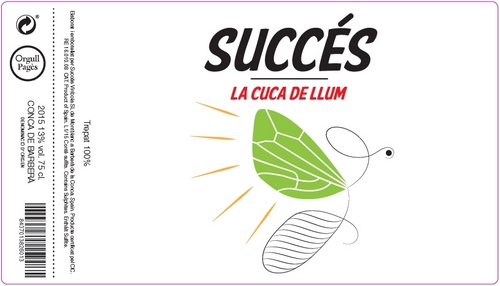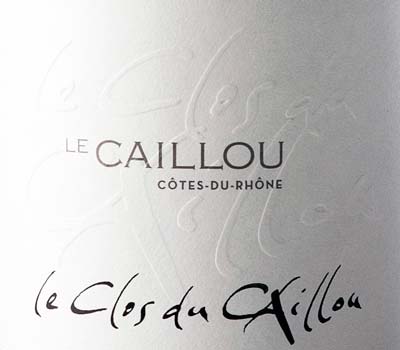Due Terre Cataratto (Organic)
Mazzoni Vespolina (Organic)
SAN SALVATORE LA CAPRANERA Fiano (Low intervention, ORGANIC)
Stirm Cienega valley White calcite (Organic, Natural)
vignerons de grimaud Fleur de Provence Rosé (practicing organic)
San Salvatore La Capranera Aglianico (Low Intervention, Organic)
Alvarez de toledo roble Mencia (bierzo) (Sustainable)
succés la cuca de llum (Organic, Natural)
field recordings chardonnayWONDERWALL (sustainable)
Clos de cailloux Côtes du Rhône Rosé (organic and biodynamic)
Clos de cailloux Côtes du Rhône vieilles vignes (organic and biodynamic)
RONCHI BARBARESCO (SUSTAINABLE)

Due Terre Cataratto (Organic)
Cataratto is one of the most important indigenous grapes from the island of Sicily and the most widely planted. It is used in nearly every white blend on the island and produces a consistent, drinkable wine. Due Terre uses the less common biotype called Cataratto Bianco Lucido which is known for making higher quality, elegant wines that are more complex, full of juicy acidity, and pleasant minerality. Their north-facing vineyard on Monte Bonifato is over 2200 feet above sea level on pure calcareous rock with a very thin, poor topsoil.
Catarratto is a very expressive grape variety, its aromas are intense, so much so that it is considered a semi-aromatic grape variety. The aromas that distinguish it are remarkable when the wine is well made: tropical fruit, peat and cereals, honey, almonds, and candied fruit, flowers and a light spicy note that cuts all the wine.
100% Cataratto Bianco Lucido harvested in mid-September, gently pressed and cold fermented at 57 degrees Fahrenheit for 15 days, and then simply aged for four months in concrete tanks.
An incredibly versatile white wine that can be enjoyed with a number of dishes. Its classic notes of tropical fruit and green almond lend well to difficult to pair foods like artichoke and asparagus, and it plays very well with all sorts of sea creatures.
Due Terre was founded by Alcamo native Vito Lauria and California wine enthusiast and merchant Catherine Stratton. Vito originally returned to Sicily in 2005 after achieving his Degree in Enology from the University of Udine in 2003 and spending a few years working at wineries in Northern Italy. Upon returning he was determined to revitalize his family’s old winery in Alcamo and spent five years making improvements.
Due Terre is based on important, historic relationships that Vito has with small, family growers working organically on the varied sand and calcareous soils of Mt. Bonifato. All Due Terre wines are from certified organic growers who have been practicing for many, many years and who have genuine engagement with the vines and love for their land. Wines are fermented on native yeast and guided into the bottle with the aim of letting the quality of the fruit speak without the need for manipulation or heavy sulfite doses.

Mazzoni Vespolina (Organic)
Ghemme is located in the north of Piemonte, about 100 miles from Barolo as the crow flies. While Nebbiolo is the dominant grape here (where it’s called Spanna), other wine grapes are cultivated here, including the wonderfully named Uva Rara (rare grape) and Vespolina – both of which are mainly used as blending grapes, but which can produce very interesting mono-varietal wines.
Up until the second world war, Nebbiolo wines from this region held a very high reputation, even more so than wines from the Langhe. Yet after the war, many farmers moved from the land to work in factories, and vineyards were abandoned.
In 1997, the region was upgraded to DOCG status in part as an attempt to preserve its vineyards but also to acknowledge the region’s historic place in Italy’s winemaking traditions. Today, families like the Mazzonis are pivotal in bringing this 200-acre appellation back into the ranks of Italy’s great wine areas, where it clearly belongs. Still, there are less than two dozen producers making wine in Ghemme.
Regional soils are a mix of volcanic stone and clay, well-draining and full of beneficial minerals. The family from the beginning has farmed the land according to organic principles, avoiding any chemical treatments. Sulfur addition is minimal.
Grapes are harvested by hand, destemmed, and fermented on indigenous yeasts—with long, slow macerations—in temperature-controlled tanks. The family ages their two Ghemme DOCG wines in a combination of older tonneaux (500L) and French oak “botti” (15HL).
Vespolina is a very special treat from Ghemme — this rare, red grape is native to this corner of northern Piedmont and is found virtually nowhere else. Look for aromas of black and red plums, red cherries, light floral notes, spices. Medium-bodied, fine, light tannins. Good acidic balance Some compare this wine to part Fleurie (Beaujolais) and a whole lot of red berry fruit and refined tannins. Almost too fun to enjoy! A wine for sharing with friends, says winemaker Tiziano Mazzoni.
100% Vespolina from estate vineyards in Ghemme and Cavaglio d’Agogna. Soils are essentially volcanic, well-draining, and high in mineral content, as well as rich in clay.
The Mazzoni family has a long history in Ghemme, yet winemaking as a profession in recent generations hasn’t always been practical. Tiziano’s father in the early 1960s left behind the life of a farmer to work in a factory, as many other Italians did at the time during the north’s economic boom.
Yet wine remained a vital part of the family’s heritage, a connection that for Tiziano, would later become a call he simply couldn’t ignore.
In many trips down to Barolo via motorbike, Tiziano explored the Langhe and the flavors and textures of Nebbiolo. And with time, he decided to return to his roots and explore Nebbiolo on his home soils.
In 1999, he purchased three acres of vineyard in Ghemme, a small portion of which was planted in the late 1960s—a symbolic bridge, in a sense, connecting his family’s leaving the land to his return to it. Today Tiziano farms a total of 11 acres in Ghemme, with a focus on Nebbiolo and Vespolina.

LA CAPRANERA Fiano
San Salvatore was founded in 1988 by Giuseppe Pagano. The estate is located in the middle of the Cilento National Park, near Paestum, in the Campania region of southern Italy. The area is known for its ancient Greek ruins, rich biodiversity, and over 2000 years of grape cultivation. Of the estate’s 250 acres, the majority is devoted to vegetable farming and woodlands. Vineyards comprise 60 acres and there are 25 acres of olive groves.
The estate is certified organic and uses biodynamic methods. The water buffalo that roam the property are the sole source of fertilizer used on the vines, along with milk for mozzarella production. Solar powers the winery.
La Capranera is Pagano’s passion project of producing low intervention, organic wine from Cilento’s indigenous grape varieties at an accessible price point. “La Capranera, translates to “black goat” in Italian, is named for the breed of goats – cilentana nera – that graze in the national park near where the grapes for these wines are grown. Once on the verge of becoming extinct, the goats have had a resurgence in population. Pagano: “I try to make modern wines with a brilliant, easy-to-drink and strongly territorial bouquet that, like the name of the animal, they are in their ease in every situation.”
Responding to Campania’s recent wine renaissance, La Capranera focuses on organic wines from indigenous grape varieties priced modestly enough that the greatest percentage of wine enthusiasts can experience these ancient varieties and the character of this place. The vines are sustainably farmed with organic methods, and the resulting wines offer a pronounced youthful vibrancy that sets them apart.
Now internationally celebrated, the wines of Campania are produced from three ancient, local grape varieties – Fiano, Falanghina, and Aglianico – harvested from vineyards in the Capaccio-Paestum area of Campania in the province of Salerno, in the middle of the Cilento National Park. The Tyrrhenian Sea is located just a few miles away, and that proximity has a moderating effect on the region’s climate, producing excellent wines of exceptional ripeness and balance.
From vineyards with clay and chalk soils in Campania’s Capaccio-Paestum area in the middle of the Cilento National Park. Widely considered indigenous to Campania, Fiano is known for low yields and intense aromatics; some believe ancient Rome’s Apianum was created from Fiano. Fermented in stainless at low, controlled temperatures and then aged 8 months in tank. elegant bouquet, bright and very clean on the palate, white flowers, and pear with mineral notes.

Stirm calcite
Ryan Stirm is a true Riesling fanatic. His arguments for why Riesling works so well in California are hard to refute after tasting his wines. He started his winemaking career in the US, teaming up with the now legendary Justin Willett from Tyler and Lieu Dit. After four years, he ended up working in the Wachau, Austria where he fell further in love with Riesling as well as Grüner Veltliner.
His winemaking philosophy is quite simple: whole cluster press everything, allow for short periods of skin contact, avoid SO2 until fermentation has completed, let indigenous yeast do their jobs, and fine/filter as minimally as possible. The ultimate goal is to let the vineyards shine through.
This bottling, 88% Riesling from Wirz in Cienega Valley, 6% Chardonnay from Glenwood in the Santa Cruz Mtns, and 6% Scheurebe from C5 in Santa Ynez, is an easy-drinking, late summertime wine, perfect for hanging out on the porch, waiting for the sun to set. Dry, with notes of green apple and an intensely zippy minerality, with multitudes of white flowers on the nose.
The grapes were picked by hand over several passes between three different vineyards. At the winery, the grapes were given 24 hours of whole cluster maceration to extract tannins, aroma, and flavor compounds in the skins (Riesling/Scheurebe) and direct press (Chardonnay). No sulfur was added to allow the juice to oxidize. After a 36-hour cold settle in tank, the clean juice was racked off the solids to other barrels for spontaneous fermentation. The wine was sulfured post completion of secondary fermentation with elévage in barrel on fine lees. Racked off fine lees a month prior to bottling. Unfined and unfiltered. 32 ppm free sulfur at bottling, Bottled June 5th, 2021. 340 cases produced.
 Fleur de Provence Rose
Fleur de Provence Rose
Vignerons de Grimaud is a co-op founded in 1932 by over 100 family-owned vignerons (winegrowers). It is situated near the gulf of Saint-Tropez and the heart of Provence. Today, the cellar now has more than 270 members spread over 12 municipalities.
Mainly planted with Grenache, Syrah, Cinsault, and Rolle (Vermentino), the vineyard producing this wine is located on the slopes perched at 500 feet in altitude, where it benefits from unparalleled sun exposure and the maritime winds blowing in from the Mediterranean Sea just a few kilometers away. Each varietal was planted on the most suitable parcel, allowing it to flourish and mature fully. The terroir is predominantly sandy-schist and limestone which allows the roots to grow very deep, making the vines more drought-resistant and contributing to the complexity of aromas and overall finesse of the finished wine.
This rosé blend is roughly 50% Grenache and 50% Cinsault. The grapes went direct to press with minimal skin contact, leading to the pale salmon color. The must was cold-fermented to preserve the aromatic freshness, and was matured in stainless steel.
Pale pink. Delicate aromas of strawberry and raspberry open to flavors of cherry, Jolly Rancher, alpine strawberry, and wet stone, and close with a wonderful burst of refreshing acidity on the finish. In true Provence style, this rosé is crisp, refreshing, and dry. It might even succeed in transporting you to St. Tropez.
 LA CAPRANERA Aglianico
LA CAPRANERA Aglianico
Please scroll up for winery background.
Aglianico was cultivated in ancient Greece, and then brought to Italy and used to produce the renowned Roman Falernum two thousand years ago. Flourishing in the sunny vineyards of Campania and Basilicata, the grape is known for producing age-worthy, muscular wines.
La Capranera’s Aglianico vines average 16 years and enjoy south-southwest exposures. This bottling is 100% gently-pressed Aglianico fermented at low, controlled temperatures in stainless and then aged 8 months in tank before bottling. full-bodied, bursting with fresh red berry, nuances of curry and chocolate; fantastic accompaniment to strongly-flavored foods, particularly medium-aged cheeses and roasted or grilled meats
 Alvarez de toledo roble Mencia
Alvarez de toledo roble Mencia
Alvarez de Toledo Mencia Roble is complex, full of fruit, and velvety smooth. It’s ready to drink now, or hang onto it for another 2-3 years. Mencia is the dominant indigenous grape of Bierzo, in northwestern Spain. Some people compare its flavor to a combination of Pinot Noir and Cabernet Franc.
Manual harvest. The bunches are destemmed and squeezed gently, then they are fermented in stainless steel tanks with temperature control. The fermentation process lasts 12 days, during which pumping-over’s are made to facilitate the extraction of tannins and color. The wine then ages 10 months in American and French oak barrels with a capacity of 225 litters each.
Alluring aromas of mature berry fruits and toasty oak. This wine is structured, elegant, and light on the palate with vibrant red fruits, peppers, capsicum and herbs finely balanced with harmonious tannins and a lingering finish.
#8 in the Wine Enthusiast’s Best Buy 100: Mencia Roble stands out because of its strong fruity character bringing out all the characteristics of the Mencia grape variety. The time it spent in oak barrels accentuates these qualities by providing subtlety, elegance and complexity. On the palate, the wine is silky, fruity, with persistence and great kindness.
Welcoming aromas of berry fruit come with a bit of oaky menthol in support. A full palate, bright acidity, and slightly edgy tannins make for a healthy ride. Plum, currant and juicy berry flavors are choppy on a fresh, bold finish.
Succés La Cuca de Llum
Mariona Vendrell and Albert Canela fell in love studying winemaking in Tarragona and started Succés Vinícola in 2011 at the tender age of 20. They exploded onto the scene with a still red wine made with Conca de Barberà’s favorite grape, Trepat, which was traditionally used in the region’s rosé Cava and first vinified tinto only a decade ago. Parellada, traditionally blended in Cava and grown best at Conca’s high altitudes, is also uncommon and exciting as still wine. Albert’s family has grown vines in the area for generations, and he uses his family’s connections to source Succés’ fruit from older, organically farmed vineyards owned by local abuelos.
The Conca de Barbera DO is in Southern Catalonia – about an hour and a half by car, west of Barcelona. Conca de Barberà is a Spanish Denominación de Origen (DO) for wines located in central Catalonia in the north of the province of Tarragona in the valleys of the rivers Francolí and Anguera. This is foothill country and the higher altitudes lead to cooler temperatures and later grape harvests.
Most of the vines are on dark lime-bearing soils, quite loose and poor in organic matter. The traditional grapes used are Macabeo and Parellada for white wines and cava, and Garnacha, Trepat and Tempranillo (known locally as Ull de Llebre) for red wines. However, the Regulatory Council of the DO has also authorized some foreign varieties: Cabernet Sauvignon, Merlot, Pinot Noir, Syrah, and Chardonnay. White varieties represent about two-thirds of the vines planted.
There are only 3,700 acres of Trepat in Spain and most of it is in this little area centered around the town of Montblanc. It’s believed that the Phoenicians brought Trepat to this region. The grape itself is quite unique. It was only used to make rosé and sparkling wine until recently. The first known commercial attempt to make red wine wasn’t until about ten years ago.
As a red wine, Trepat tends to give wines that are medium-bodied but fruity and with tons of character. They taste like a beefier version of Pinot Noir, Schiava or Gamay. Trepat produces light-bodied, aromatic reds reminiscent of Jura reds.
20-50 year old vines planted at 1600 feet above sea level. Native yeast fermentation, farming practices beyond Organic (a true hands-off, almost Permaculture approach to wine grape growing). Thirty day skin contact, aged five months in tank on the fine lees, and bottled with minimal traces of SO2 . Unoaked, unfiltered, unadulterated.
The hipster wine geeks out there call this style of wine glou glou, or in English, a very quaffable, simple, easy-to-love glass of wine. Cuca de Llum Succes Trepat is fresh and delicate, with dusty tannins, and notes of dried flowers, fresh cherries, herbs, and minerals. Think unoaked Pinot Noir meets Barbera, but fresher.
 Field Recordings Chardonnay Wonderwall
Field Recordings Chardonnay Wonderwall
Between Fableist, Wonderwall, Neverland, Fiction, and Field Recordings, we carry more wines made by Andrew Jones than any other winemaker – over 20 SKUs and growing. Why? His wines are varietally correct, reflect a sense of place, follow organic farming practices, and punch well above their weight class in the value department.
Field Recordings is Jones’ personal catalog of the people and places he values most. Spending his days as a vine nursery fieldman planning and planting vineyards for farmers all over California, Andrew is sometimes offered small lots of their best fruit on the side. Having stood in just about every vineyard on the Central Coast, he has a keen eye for diamonds in the rough: sites that are unknown or under-appreciated but hold enormous untapped potential. As friendships are made and opportunities are embraced, Andrew produces small quantities of soulful wine from these unusual, quiet vineyards.
Whole cluster pressed, native yeast fermentation, minimal sulfur added at bottling. 100% Edna Valley fruit from four vineyards. Aged in 50% oak and 50% stainless.
Opens up with a nose full of pears and clementine. Super fresh and clean like an ocean breeze. On the palate, ripe stone fruit, more citrus, and pie crust. Golden fruit, luscious palate, and fragrance, with enough oak to lift and enhance and a lovely acid to balance, with a crisp, long finish.
Clos de cailloux
Wines from Le Clos du Caillou are Rhône blends at their most intense. Concentrated and richly textured, these organically raised, older-vine wines capture the spice and silk of old-vine Grenache grown on the region’s finest terroirs. Each wine too reflects the native perfumes of the south, the “garrigue” blend of thyme, rosemary, and lavender that grows wild among the estate’s vines.
Of all the terroir in the Côtes du Rhône appellation, the “clos” of Caillou has to be one of the most exceptional. Completely surrounded by Châteauneuf-du-Pape vineyards, this walled parcel of land was intentionally left out of the appellation by the owner, following a bureaucratic spat back in 1936. What this means today is that Caillou’s Côtes du Rhône wines are qualitatively the same, with regard to terroir and exposition, as top Châteauneuf wines.
Caillou’s devotion to the character of the land (through bottling wines according to terroir) and its dedication to organic and biodynamic viticulture are what captivated us so many years ago when we first encountered these wines; and over the years, this fidelity to soil and soul has only intensified.
The estate in Courthézon, in the northeastern part of the Châteauneuf-du-Pape appellation, boasts a mix of terroirs with a predominance of sand, which gives Caillou wines their silky elegance and fine-grained texture. Importantly, the “clos,” or walled portion of the estate where vines for Côtes du Rhône wines are grown, shares the same terroir with Caillou’s Châteauneuf-du-Pape vineyards. The estate has been practicing biodynamic viticulture since 2003, and was certified organic as of 2010.
Grapes are harvested by hand and manually sorted in both the fields and at the cellar, then partially destemmed and fermented on indigenous yeasts in cement tanks. Wines are aged in a combination of large foudre, demi-muid and barrel, depending on the wine and the vintage, for approximately 15 to 18 months in the estate’s cool underground cellars, and are bottled unfined and unfiltered.
Clos de cailloux Côtes du Rhône Rosé (organic and biodynamic)
80% Grenache, 10% Cinsault and 10% Mourvèdre- vine age 25 years on average. Hand-harvested. Pressed full cluster (rosé de pressurage). Juice left to settle overnight in temperature-controlled tanks. Fermented on indigenous yeasts in tank. Aged in tank for four months. Aromas of summer raspberries, light herbs, lavender, pink roses, red plums. Fresh, juicy, tangy; red berries, wild strawberries, white peaches.

Clos de cailloux Côtes du Rhône vieilles vignes cuvée Unique (organic and biodynamic)
80% Grenache, 10% Syrah, 4% Carignan, 3% Mourvedre and 3% Counoise, from a mix of vineyards that share similar terroir to classic Châteauneuf-du-Pape vineyards: large, round quartz river stones (galets roulés), clay and sand. Vine age is 45 years, on average.
Hand-harvested. Fermented on indigenous yeasts in temperature-controlled, stainless steel tanks. Aged for 16 months in upright wooden tanks and older foudre (52HL). Bottled unfined and unfiltered. Aromas of garrigue (wild thyme, lavender, and rosemary). Flavors of raspberry and black cherry.
 RONCHI BARBARESCO (SUSTAINABLE)
RONCHI BARBARESCO (SUSTAINABLE)
Winemaker Giancarlo Rocca and three generations of the Rocca clan live in a house built by the family, surrounded by ‘Ronchi’ cru vines. This natural amphitheater not only captures the sun to push Nebbiolo to perfect ripeness but also is stunningly picturesque.
Their peerless Nebbiolo wines are still an insider’s find. The “Ronchi” cru runs along the southern edge of the appellation, near the historic town of Barbaresco. Bordered by ‘Montestefano’ to the north, where Nebbiolo shows a deep complexity and elegant tannins, and ‘Moccagatta’ to the south, the source of silky Nebbiolo with delicate yet intense perfumes, ‘Ronchi’ combines the best of all these attributes in a wine that is unforgettable.
The vineyards are part of the family; winemaker Giancarlo Rocca can walk from his breakfast table to his Nebbiolo vines in less than a minute. Needless to say, all work is performed by hand, and as sustainably as possible. No herbicides or pesticides are used. Grapes are harvested by hand, destemmed, then fermented in temperature-controlled, stainless steel tanks. Wines are aged, depending on the cru, in either Slavonian oak casks or a combination of French oak barrels and cask. In recent vintages, Giancarlo has been experimenting with aging wines in terracotta amphorae. All wines are bottled unfined and unfiltered.
Aromas of black cherries, licorice, game, light smoke; full-bodied and concentrated yet balanced, with moderate tannins and good length. Great aging potential. Ronchi Barbaresco is a wine of tremendous power and structure. Dried cherry, menthol, licorice, spice, pine, and scorched earth add to an impression of virile power. The aromatics open up beautifully with time in the glass. Pair with grilled red meat; pork sausages; mushroom dishes




